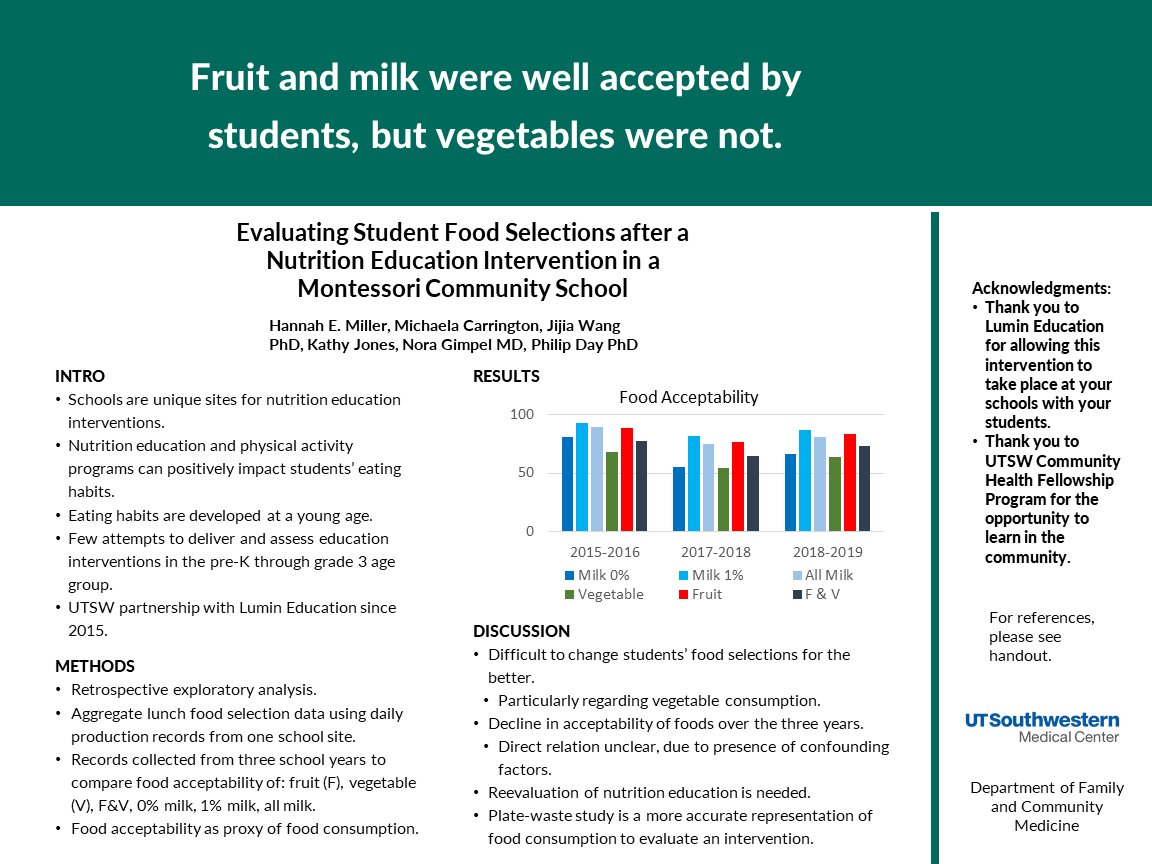SRFP039: Evaluating Student Food Selections after a Nutrition Education Intervention in a Montessori Community School
Hannah Miller; Michaela Carrington, MS, RD; Jijia Wang; Nora Gimpel, MD
Abstract
Objective: The purpose of this study was to evaluate student food selections before and after a nutrition education intervention was implemented in a Montessori school.
Human Subjects Review: Approved as non-regulated research by the UTSW IRB.
Study Design: Retrospective exploratory analysis.
Setting: A single Montessori community school with students in grades pre-K through grade 3.
Instrument: Aggregate lunch food selection data, including total food items offered and total food items left over, via daily production records.
Main Outcome Measures: Records were collected from three school years to compare the food acceptability – the percent of food item taken from the total offered - of fruit (F), vegetable (V), F&V, 0% milk, 1% milk, and all milks before and after the implementation of the intervention program. Food acceptability served as a proxy for food consumption.
Results: In all years, fruit (82.88%) and all milks (81.74%) were well accepted by students, but vegetables (62.00%) were not. The study found that from year 1 to year 2, there were statistically significant (p <0.0001) decreases in intake in all categories. This trend continued when comparing year 1 to year 3.
Conclusions: Prior studies show that even in successful interventions, when vegetable or F&V intake does increase, changes are minimal. These findings corroborate the difficulties prior studies have demonstrated in changing students’ food selections for the better, particularly regarding vegetable consumption. This analysis of production records showed a decline in acceptability of foods over the three years. It is unclear if these changes are directly related to the instructional program, due to the presence of confounding factors. Future studies should attempt to reevaluate nutrition education and subsequently conduct a plate-waste study for a more accurate representation of food consumption before and after an intervention.

Jack Westfall
jwestfall@aafp.org 11/21/2021Great poster and abstract. Thanks for sharing at NAPCRG